
Using the robot, Dash, students will program him to land on different numbers in order to make a specific total.
- Subject:
- Mathematics
- STEM
- Material Type:
- Activity/Lab
- Author:
- Glenn Shelton
- Carrie Robledo
- Date Added:
- 03/30/2020

Using the robot, Dash, students will program him to land on different numbers in order to make a specific total.
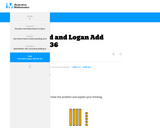
This is a task from the Illustrative Mathematics website that is one part of a complete illustration of the standard to which it is aligned. Each task has at least one solution and some commentary that addresses important aspects of the task and its potential use.

This parent guide supports parents in helping their child at home with the 1st Grade Math content. Within the folder you will access Parent Guide PDFs in FIVE Languages: Arabic, English, Hindi, Spanish, and Vietnamese to help on-going communication with caregivers.

This resource accompanies our Rethink 1st Grade Math Number & Operations in Base Ten unit. It includes ideas for use, ways to support exceptional children, ways to extend learning, digital resources and tools, tips for supporting English Language Learners and students with visual and hearing impairments. There are also ideas for offline learning.

The Common Core State Standards (CCSS) videos are designed to support states, schools, and teachers in the implementation of selected math standards. Each video is an audiovisual resource that focuses on one or more specific standards through examples and illustrations geared to enhancing understanding. The intent of each content-focused video is to clarify the meaning of the individual standard rather than to be a guide on how to teach each standard, although the examples can be adapted for instructional use.
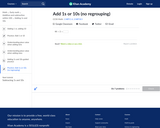
In this Khan Academy interactive, students will add ones or tens to a two-digit number.
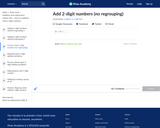
In this Khan Academy interactive, students will add two-digit numbers to two-digit numbers.
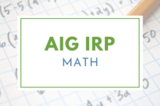
Students will play a card game involving addition and reasoning. This lesson was developed by NCDPI as part of the Academically and/or Intellectually Gifted Instructional Resources Project. This lesson plan has been vetted at the state level for standards alignment, AIG focus, and content accuracy.

In this interactive, students solve addition and subtraction sentences using tens.

This lesson is for Grades 1 - 2 on math. At Home Learning Lessons are a partnership between the North Carolina Department of Public Instruction, PBS North Carolina, and the William and Ida Friday Institute for Educational Innovation. Each lesson contains a video instructional lesson, a PDF lesson plan with a transcript, and a PDF file of extension activities.
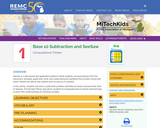
In this activity, students will solve a subtraction problem with Base 10 blocks and post their work to SeeSaw. The Number Pieces App allows students to manipulate base 10 blocks electronically to show their understanding of counting concepts.

In this Khan Academy interactive, students will add two-digit numbers with multiples of tens and some ones by decomposing them.

First grade students will work in small group settings to discover how to become an architectural engineer. They will research and demonstrate their knowledge of bridge designs through STEM and drawings. Finally developing a strong infrastructure that will collaboratively fit onto a created setting. Allowing them to present a model of their findings.

This interactive resource defines the term "Bridging to Ten", and contains an interactive to illustrate the definition. Students use the place value visuals to illustrate bridging to ten, practicing building up to ten or building down to ten to more easily add two numbers.
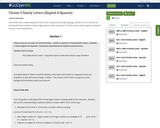
The Family Letters explain big ideas of the cluster using family-friendly language. Families can also find tips for working with their children at home, digital games, videos, and books. This file contains both English and Spanish versions of the Family Letters.
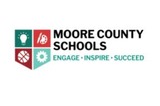
Students work together using their knowledge of grouping tens to create links of tens, combine and compare their links, then realize that if they combine all of their links this could create enough “snow” to build a snowman in the classroom!
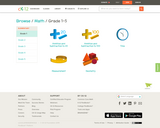
This site is a series of video lectures and interactive exercises for teaching basic mathematics skills to first graders. It has separate addition and subtraction skills reviews numbers up to 10, 20, and 100; a section on telling time and reading clocks as well as course material on measurement and geometry.
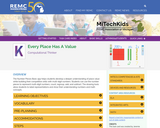
The Number Pieces Basic app helps students develop a deeper understanding of place value while building their competition skills with multi-digit numbers. Students can use the number pieces to represent multi-digit numbers, count, regroup, add, and subtract. The drawing tools allow students to label representations and show their understanding numbers and math concepts.

This lesson reviews the concepts of counting beyond 100 by counting by 10's with tally marks. The shoe collection associated with it began in lesson 2. This lesson also allots time for students to count all the shoes around the school with the teacher's help and to take action in the last step of the shoe collection to help others in the world by bagging up the shoes for transport. The action taken by the students produced a large number of shoes to donate. The final part of this lesson and unit is to complete a reflection assessment.This lesson was developed by James Agner as part of their completion of the North Carolina Global Educator Digital Badge program. This lesson plan has been vetted at the local and state level for standards alignment, Global Education focus, and content accuracy.

The shoe collection associated with the unit continues and students will put out more shoes around the school in pairs of two. This lesson reviews the concepts of counting by adding two, five, and ten. It introduces a way to count numbers quickly by using a Ten Frame to count fives and tens and introduces a game called 100 Hunt.This lesson was developed by James Agner as part of their completion of the North Carolina Global Educator Digital Badge program. This lesson plan has been vetted at the local and state level for standards alignment, Global Education focus, and content accuracy